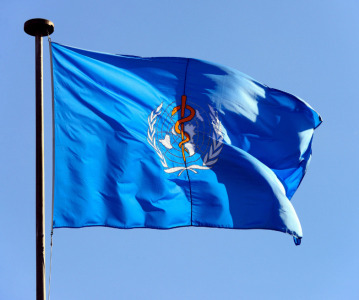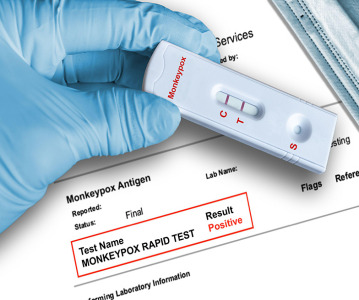Real-world analysis of more than 44,000 patients reinforces safety and effectiveness of Pradaxa in routine clinical care

New data show Pradaxa reduced stroke risk and major bleeding compared to warfarin in patients with non-valvular atrial fibrillation.
Brigham and Women's Hospital in Boston and Boehringer Ingelheim have announced the results of a new interim analysis from a long-term study evaluating the safety and effectiveness of Pradaxa (dabigatran etexilate mesylate) relative to warfarin in routine clinical practice. These data, from a pooled analysis of two large US commercial health insurance databases, showed that patients with non-valvular atrial fibrillation (NVAF) treated with Pradaxa — a novel oral anticoagulant (NOAC) — had fewer strokes and fewer major bleeding events compared to NVAF patients treated with warfarin. The findings were presented at the American Heart Association (AHA) Scientific Sessions 2015 in Orlando.
"Beyond clinical trials, there is a wealth of available health insurance data that provides an excellent opportunity to grow our knowledge of oral anticoagulant use and outcomes for patients," said lead investigator John Seeger, Department of Medicine, Brigham and Women's Hospital, a teaching-affiliate of Harvard Medical School. "These real-world data further define the safety and effectiveness of dabigatran for patients and its use in routine care, and are consistent with the results of the pivotal RE-LY clinical trial."
The primary study outcomes were stroke and major bleeding rates during PRADAXA and warfarin treatment, based on data collected over 32 months from 44,672 NVAF patients (22,336 propensity score matched Pradaxa and warfarin treatment initiators) in two insurance databases — Truven MarketScan (18,276 patients per group) and Optum Clinformatics (4,060 patients per group). Researchers identified 65 strokes for Pradaxa-treated patients (0.73 incidence rate per 100 patient years) and 78 strokes for warfarin-treated patients (1.08 incidence rate per 100 patient years), representing a 28% reduction in stroke risk for Pradaxa compared to warfarin (HR 0.72; 95% CI 0.52 - 1.00). In addition, researchers reported 395 major bleeding events for Pradaxa-treated patients (4.47 incidence rate per 100 patient years), compared to 459 events for warfarin-treated patients (6.42 incidence rate per 100 patient years), representing a 26% reduction in the risk of major bleeding events with Pradaxa compared to warfarin (HR 0.74; 95% CI 0.64 - 0.84). There were 238 major gastrointestinal bleeding events for Pradaxa-treated patients (2.69 incidence rate per 100 patient years) and 213 for warfarin treated patients ((2.97 incidence rate per 100 patient years); HR 0.95; 95% CI 0.79 - 1.14).
"With this long-term study program, in collaboration with Brigham and Women's Hospital, we are seeking to expand awareness and understanding of real-world experiences with NOACs and the impact on reducing stroke risk, which remains a major public health concern," said Sabine Luik, senior vice president, Medicine & Regulatory Affairs, Boehringer Ingelheim. "These data add to the robust research program supporting the real-world value of Pradaxa, the only NOAC with both proven superiority to warfarin in reducing stroke risk in NVAF patients and a specific reversal agent."
Related News
-
News CPHI Frankfurt 2022: Innovator Interview – DSM Biomedical
At CPHI Frankfurt we spoke to Anne-Cecile Bayne, Global Science & Innovation Lead Pharma and Medical Nutrition, and Marc Hendriks, Vice President Strategy & Business Development, on their expertise in nitrosamines and business strategy at DSM Biomedica... -
News New WHO health emergency guidelines expect full transparency from Big Pharma
The WHO are proposing a new set of pandemic guidelines to set out how future global health crises should be handled. -
News Magic mushrooms could be used to treat mental health conditions
A compound found in magic mushrooms, psilocybin, could be used to treat mental health conditions and help patients suffering with severe depression, as shown by the results of the largest study of its kind to date. -
News UK-based partnership to launch DETERMINE study into rare cancer research
UK-based CRO Quanticate is set to partner with Cancer Research UK for the launch of the DETERMINE study focused on testing a range of existing and approved drugs and therapies on rare cancers. -
News FDA approves Thermo Fisher blood tests for wheat and sesame allergies
Both tests have been approved by the US regulator for in vitro diagnostic use -
News QIAGEN launches world’s first syndromic test for monkeypox
The test can distinguish between monkeypox and other diseases that cause similar symptoms. -
News Monkeypox Update: Vaccine shortage, sewage surveillance and global testing
As concern over the monkeypox outbreak continues to rise, we take a look at major developments from the first week of August. -
News CPHI Podcast Series: The importance of novel excipients for innovative drug development
The latest episode in the CPHI Podcast Series dives into the world of novel excipients and explores their importance for innovative drug development.
Position your company at the heart of the global Pharma industry with a CPHI Online membership
-
Your products and solutions visible to thousands of visitors within the largest Pharma marketplace
-
Generate high-quality, engaged leads for your business, all year round
-
Promote your business as the industry’s thought-leader by hosting your reports, brochures and videos within your profile
-
Your company’s profile boosted at all participating CPHI events
-
An easy-to-use platform with a detailed dashboard showing your leads and performance


.png)




